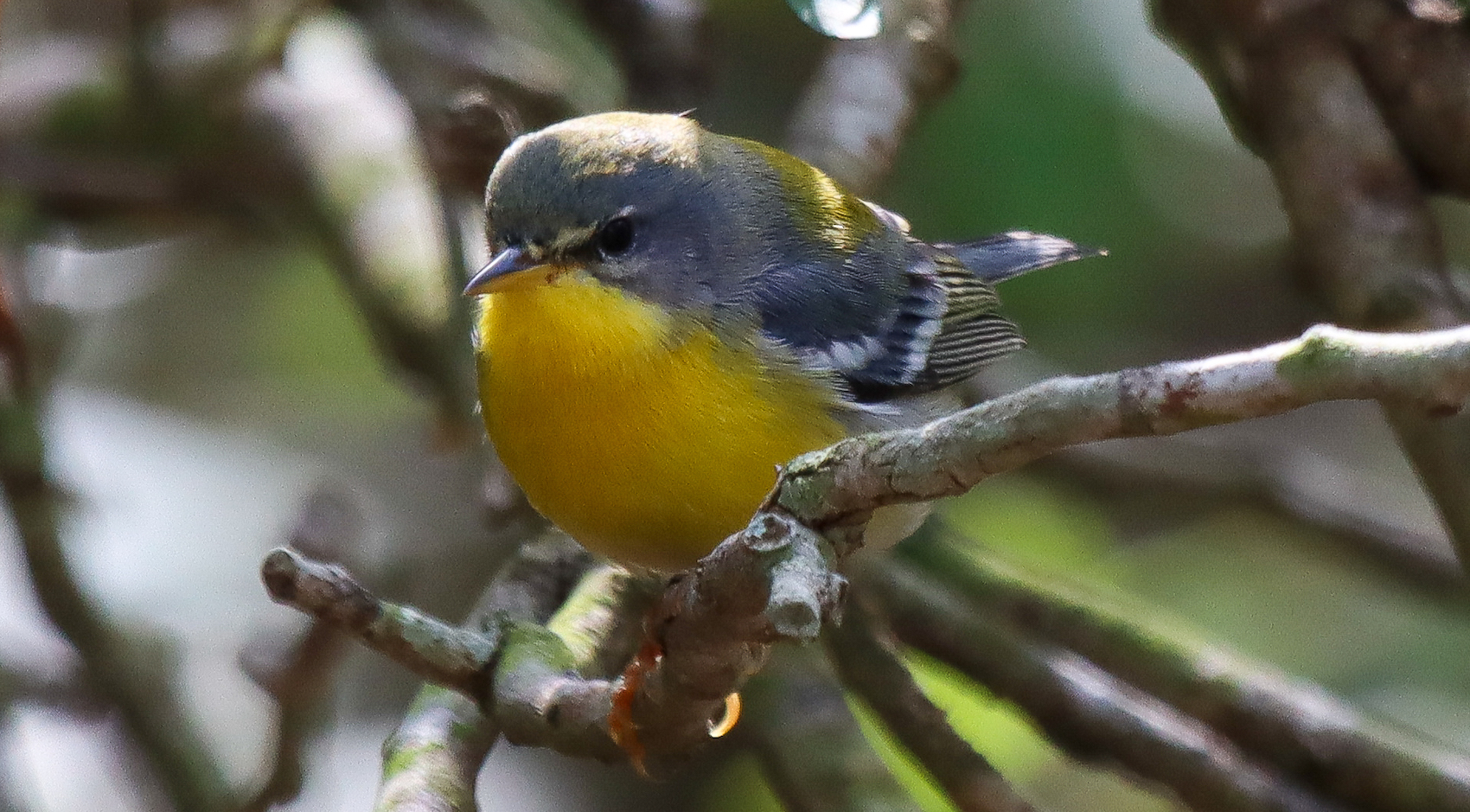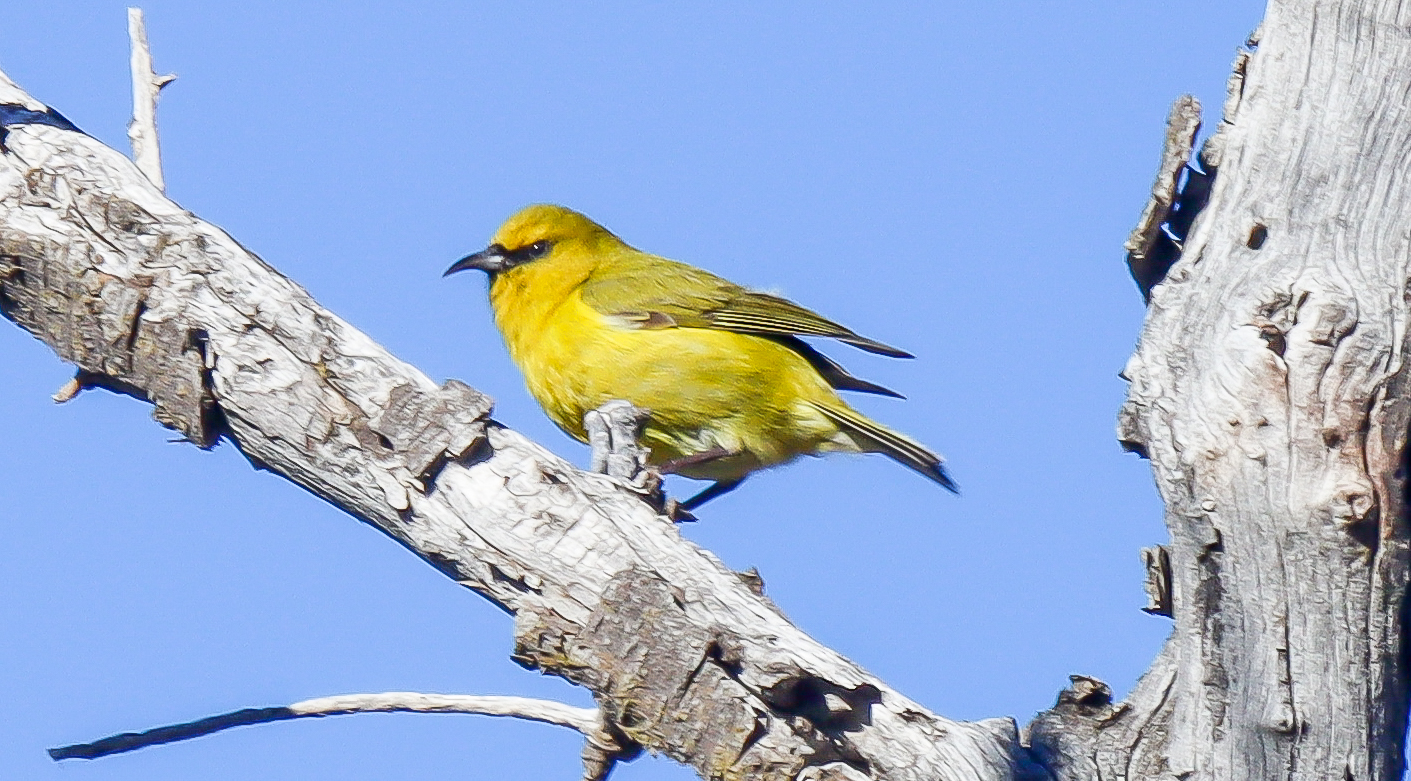Locations >
Bird Trip Blog
South Texas January 2022
My first out-of-state birding trip this year was to the south Texas area. I had 11 target species for my life list and managed to find 5 of them: Social Flycatcher, Golden-Crowned Warbler, Crimson-Collared Grossbeak, Tropical Parula, and Red-Lored Parrot. My near miss was the Bat Falcon. During this 6 day trip I traveled almost 200 miles each day in an attempt to see all of my 11 target birds. The main obstacle was cold, sometimes windy and rainy, weather in the area. My previous two visits had temperatures in the low to mid-80's and mostly sunny, calm conditions. This trip had temperatures mostly in the mid-60's, clouds, some rain and wind that shut down many of my target birds.

I visited several locations, some over a half dozen times. These were: University of Texas Rio Grande Valley in Brownsville for the Social Flycatcher, Olivera Park in Brownsville for the several species of parrots, Santa Ana NWR for the Bat Falcon, Valley Nature Center in Weslasco for the Golden-Crowned Warbler, Quinta Mazatlan in Mission for the Crimson-Collared Grossbeak, Laguna Atascosa NWR for the Tropical Parula, Bentsen Rio Grande State Park for the Hook-Billed Kite, and Salinenos Nature Preserve for Morelet's Seedeater. With such poor weather conditions, I had to pick and choose certain birds. I picked wrong several times. For example, I had almost zero chance for the seedeater with cloudy, cold conditions shutting them down. On another day, I might have had more success, but the drive there was 100 miles each way so I only had one shot.

One of the most entertaining sites was Olivera Park where about 6 PM each evening (later of course with each month towards June) the parrots would come in squawking where 300 birds were deafening at times. This show would last 15-30 minutes before the parrots settled in for the night. Red-Crowned Parrots dominated this group, but White-Fronteds made up about 50 of the few hundred that came in. In this mass of parrots, one can sometimes find Yellow-headeds, Red-Lores, and Lilac-Crowned. I was able to pick out two Red-Lores when they perched fairly close.

The Social Flycatcher was on the University of Texas Rio Grande Valley campus in the resaca area almost directly behind (N) of Sabal Hall. The main area frequented by this bird was the land bridge mostly within a 100 yard radius. I actually saw it when another birder found it along Ringgold Rd just N of the land bridge. I found the best access for parking when classes are in session was the Lincoln Park lot along University Drive. The problem faced when searching for this species is that it looks close enough to the Great Kiskadees in the area that it can easily be missed or misidentified. It is about 20% smaller and has a noticeably smaller bill than the Great Kiskadee.

One of the more difficult birds to find was the Golden Crowned Warbler although because one of the workers at the Valley Nature Center could hear and recognize the chip note was with my group, we found it quickly. However, getting a quality image took about an hour for me.

Hawaii Birding (February 2022)
This trip to Hawaii was not specifically a birding trip. However, it is very difficult to go anywhere without seeing new bird species. Elaine and I visited Hawaii, my second time on the ground and her first. We visited dozens of places: Hawaii Volcanoes National Park (HiVNP), Kona Coast, Black Sands Beach on South Coast, Mauna Kea, and the Hilo area. We stayed in a Bed and Breakfast called the Hawaii Ohana Home, a very nice home in Hilo. Within the HiVNP, there were several
sites that were classic tourist areas: Rim Trail, Old Rim Trail, Devastation Trail, Thurston Lava Tube, and Kipuka Puaulu. Along the Kona coast, a favorite site was Kaloko-Honokolau, specifically the Aimakapa Pond. Never having birded in Hawaii, there was not any place I could not see life birds.
In HiVNP, I saw Anapenas, Amkihi's, Warbling White-Eyes, Kalij Pheasants, Hawaiian Geese (Nene), Omaos, and Common Waxbills. The best bird I found there was soaring over the caldera at the Kilauea Lookout, the White Tailed Tropicbird. There were 3 of them using the updrafts created by the heat in the caldera. The only bird I expected to find, but did not, was the Hawaiian Hawk. I ended up seeing those in Hilo, but never had a chance at a photo.





Once of the first places we visited was Mauna Kea. We only made to the closed visitor center because of ice near the top and a 4-wheel drive requirement. The ride up and the visitor center area were very productive. On the way up, we saw several Erckel's Francolins and Eurasian Skylarks. Around the visitor center were California Quail, Chukars, and Amakihis.


We actually stopped before our trip up Mauna Kea at what is currently my favorite place to bird in Hawaii County, Kaulana Manu Nature Trail. We ended up stopping there 4 times and each time the place was loaded with birds. The trail is only a half mile loop through what looked like mature forest (Ohi'a lehua and Koa trees) for 5500 feet elevation. This was the only place I saw Iiwis, a very long curve-billed finch (Fringillidae). The most abundant bird here were the Anapenas. This was an area that would produce multiple species of birds, most I probably heard but never saw.




The trip to Kona from Hilo was a pleasant drive and only 75 miles between cities. The road was cut through lava flows of various ages and next to the Mauna Kea summit road. Kona was definitely a drier city although it did not rain much in Hilo when we were there. While it was almost alway cloudy in Hilo, we had zero complaints about the weather anywhere on the island. We were never cold or hot with temperatures ranging between 64 and 80 degrees in the two major cities. In Kona, we stopped at the Kaloko-Honokolau, specifically the Aimakapa Pond. The hike to the ocean and the pond was about 1 1/4 miles through open and shady habitats leading to the ocean. The south access to the pond was closed so we had to go an extra 1/4 mile to the ocean side. This pond was separted from the ocean by an elevated beach. This was the only spot we saw Green Sea Turtles up close just a few meters from the shoreline. This preserve produced a Gray Francolin, Hawaiian Coot, Hawaiian Black Necked Stilt, Hawaiian Black Crowned Night Heron, Saffron Finches, Yellow Fronted Canaries, Warbling White Eyes, Zebra and Spotted Doves, and the standard Anapenas. There was almost no place on the island where you would not see the doves.





Recent articles about Bird Trip Blog

Birding Wisconsin
I made this trip from May 14-19th. With the help of my friend, Shawn Miller, that lives near Madison, it became one of my top 10 bird trips of all time. What a difference it makes when you go with someone that knows the area, where to find specific birds, and what times to search?

